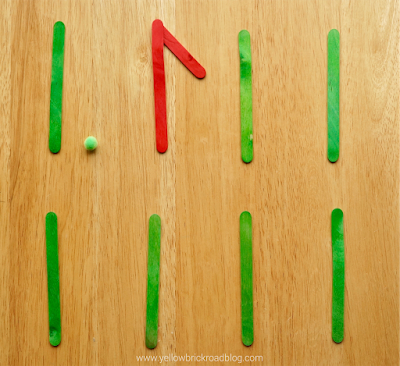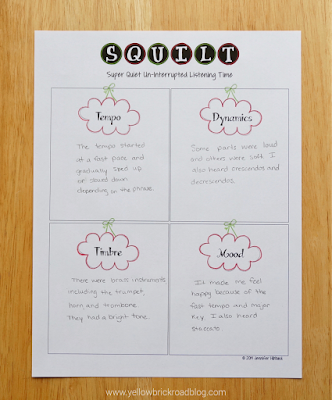The halls here at home have been decked for a few weeks now, and my “Traditional Christmas” radio has been getting a lot of play on Pandora. I love the music this time of year, and I’m trying to savor it as much as possible. As for my blog, my goals is to help you through the month of December with loads of lesson ideas. Maybe they’ll free you up in the evenings and give you time for at least one cup of hot apple cider and a little Netflix. Your feet deserve a rest and so does your brain!
Do some focused listening using the video below.
There are several concepts students can focus on, such as timbre, dynamics, and form. Use my free SQUILT sheets as formative assessment. There are a few different options available. Click the picture below to download a free copy from my shop.
MOVEMENT
After filling out their SQUILT sheets, give students a chance to move with the music. Use the following stipulation to make it a little more fun: not only should they move to the beat as usual, students must also stop and pat/clap/stomp/snap the rhythm each time they hear the phrase “Fa la la la la, la la la la”. It’ll be especially fun to watch them listening for that phrase toward the end of the piece, when the texture becomes thicker. This movement activity paired with SQUILT would be a great lesson to leave behind for a non-music sub.
RHYTHM
This song is great for working on dotted quarter and eighth note rhythms. You can sing through the piece using my sing-along slides (see bottom of post). How you choose to proceed depends on how much your students know about dotted quarter and eighth notes. You might begin by asking students about the rhythms that they already know, such as the barred eighths, quarter, and half notes. Then, ask them to write the rhythms out on the interactive whiteboard or spell them using manipulatives, such as popsicle sticks or rhythm cards. In the example below, I used a small puffball to represent the dot on the quarter note.

Once they’re finished identifying known rhythms, you might ask them the missing number of beats (two) in each measure that contains unknown rhythms. Once you’ve established that the unknown rhythms equal two beats, you can write in the dotted quarter and eight note. If your students are already familiar with this rhythm, you can ask them to write it out using manipulatives as a way to check for understanding.
If you didn’t catch last week’s post, be sure to download the free sing-along slides by clicking on the picture below!



